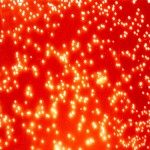Link to Pubmed [PMID] – 31225613
Link to DOI – 10.1093/jac/dkz136
J. Antimicrob. Chemother. 2019 07; 74(7): 1856-1862
The prevalence of infections caused by OXA-48-like carbapenemase-producing organisms in Ireland has increased dramatically since 2011 and is an urgent public health issue. Genome-based high-resolution genotyping was used to analyse clinical isolates submitted to the Irish Carbapenemase-Producing Enterobacteriaceae Reference Laboratory Service for a 13 month period (2016-17).A total of 109 OXA-48-producing non-duplicate clinical isolates from 16 submitting centres were sequenced. Using a gene-by-gene approach, isolate genomes were characterized by MLST and core genome MLST, and the presence of antimicrobial resistance determinants was determined. Reference mapping and a novel plasmid MLST-type approach was applied to determine plasmid background.The OXA-48-like-producing isolates were Escherichia coli (n = 56), Klebsiella spp. (n = 46) and Enterobacter cloacae (n = 7). Amongst the E. coli isolates there were 37 different STs and amongst the Klebsiella spp. isolates there were 27 different STs. blaOXA-48 was present in 105/109 (96.3%) of isolates. Based on mapping analysis and detection of the pOXA-48 IncL-type plasmid replicon and backbone genes, a pOXA-48-like plasmid was identified in 93/109 isolates (85.3%). The remaining isolates (n = 16; 14.7%) harboured blaOXA-48-like genes in unknown environments. Using a gene-by-gene approach two pOXA-48-like plasmid groups with 2/71 pOXA-48-like locus differences between them were identified.In Ireland we found a diversity of genotypes associated with OXA-48-like-producing clinical isolates with the IncL pOXA-48 plasmid type predominating as the blaOXA-48 genetic environment. A plasmid MLST approach can rapidly identify plasmids associated with outbreaks and monitor spread of types temporally and geographically.

